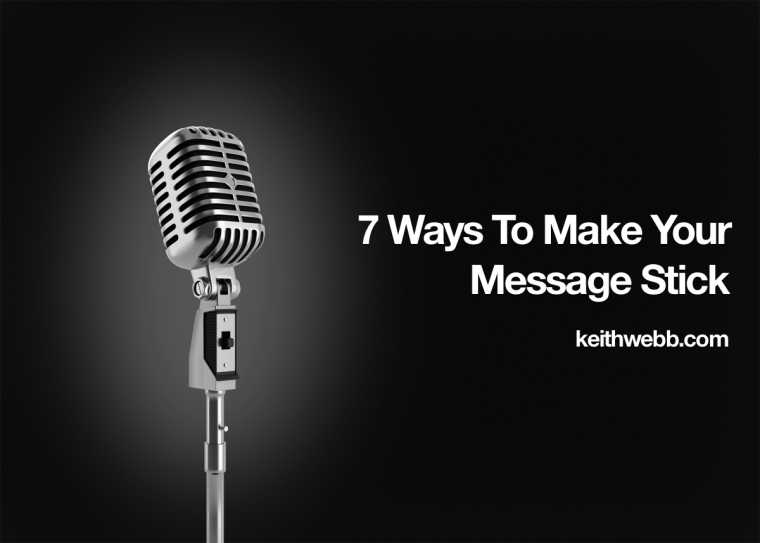As leaders, we communicate with the hope of informing or persuading. We do this with groups, teams, and individuals. It is shocking to me how easily my message can be misunderstood, and how quickly it is forgotten. I’ve found four communication memories I can tap into to increase retention of my message. Practically, these can be lived out in 7 ways to make your message stick.

This past Christmas my family received a dart board. In our first attempts the darts had minds of their own. Each throw landed in seemingly random places, only occasionally where we wanted them to. After a few weeks and throwing hundreds of darts I noticed that my 3 darts clustered much closer together. Even to the point that my son did a perfect “Robin Hood” – landing a dart directly into the tail of another dart.
It’s muscle memory that makes us throw darts to the same spot. Muscle memory in tennis allows us to serve in bounds without really thinking about it. Muscle memory in golf sends our drives toward the green.
4 Communication Memories
In communication, there a few “memories” that we can tap into that will improve our communication and the retention of our message.
- Emotions memory. The things we attach stronger emotions to, we remember.
- Values memory. The things we agree with, we remember.
- Experience memory. The things that relate to our experience, we remember.
- Ambition memory. The things that we want to achieve, we remember.
The key to making your message stick is to communicate using these four approaches.
7 Ways To Make Your Message Stick
In order to communicate with the audience’s emotions, values, experience and ambition, there are a number of practical way you can do it. It’s often small changes that make a big difference in your audience’s retention of your message.
- Use emotional words. Don’t be neutral. Compare this, “I miscalculated,” to “I made a stupid mistake.” The second way of saying it has more emotion. Use words like “shocking, failed, perfect, sad, lie, confident, stunned, afraid, etc.” Not just words that are emotions, but words that generate emotions.
- Use a story. People remember stories much more than information. Stories engage our imagination and draw on emotional memory. Stories stick with people much longer than information does.
- Use an image. Slides with bullet points of information do not communicate like a photo does. I sometimes choosing the right photo for a blog post takes me as long as writing it. What photo would evoke the emotions or the ambitions of your audience?
- Use values logic. “In order to achieve A and B, we are must first do 1, 2, and 3. Here’s why…” Explain the Why in order to tap into your audience’s positive judgement. Show it’s good, positive, and helpful, not just logical. Logic doesn’t convince as effectively as connecting to your audience’s values.
- Use your voice. Alway begin communicating with voice – in person, by telephone or webinar. With our voices we communicate a rich depth of information through our tone, facial express, pacing, volume, and body language. We also can interact with questions and comments directly.
- Use multiple mediums. Follow voice communication with many different mediums to say the same thing. Put a story in a newsletter or website, create a video, show photos, use metaphors, have others share a testimonial or case study, discuss in teams or small groups or by department.
- Use win-win. Understand what your audience personally wants to achieve and make sure your presentation shows why it’s a win for them. The more people see “what’s in it for me” the more they remember your message.
We often believe that communication is about passing on information. It’s really not. It’s about what that information does with our emotions, values, experience, and ambition. Tap into those “memories” and your audience will not only remember what you said, they’ll support it.
Question: How do you make your message stick? You can leave a comment by clicking here.



This is excellent.
It is diverse in that it covers the spectrum of inputs humans have to receive information and the interior processing of that info.
It is concise and easy to remember and use in all form of communication.
Love it. Well done Dr. Webb.
Thanks Matt. Glad you found it helpful.